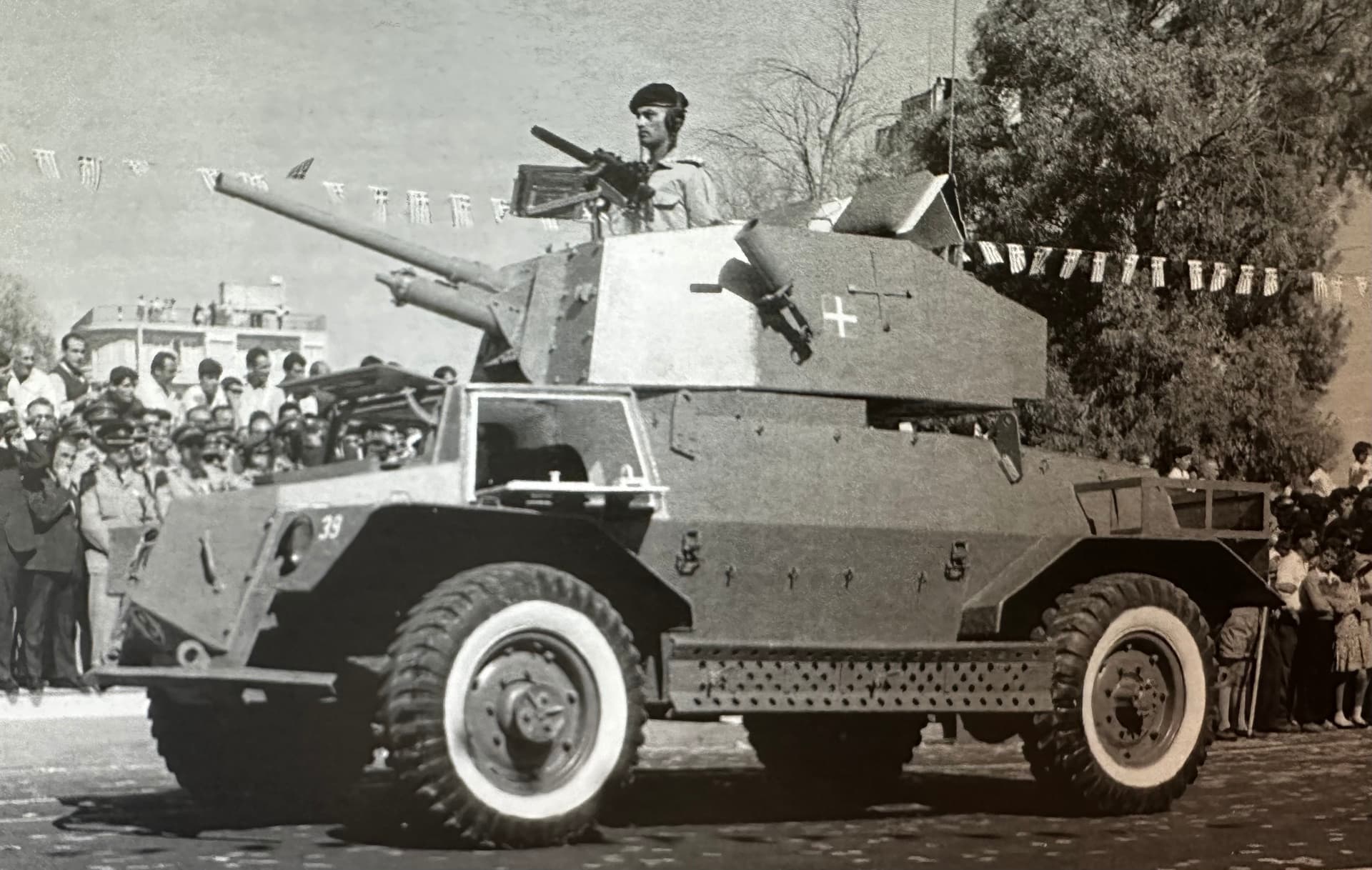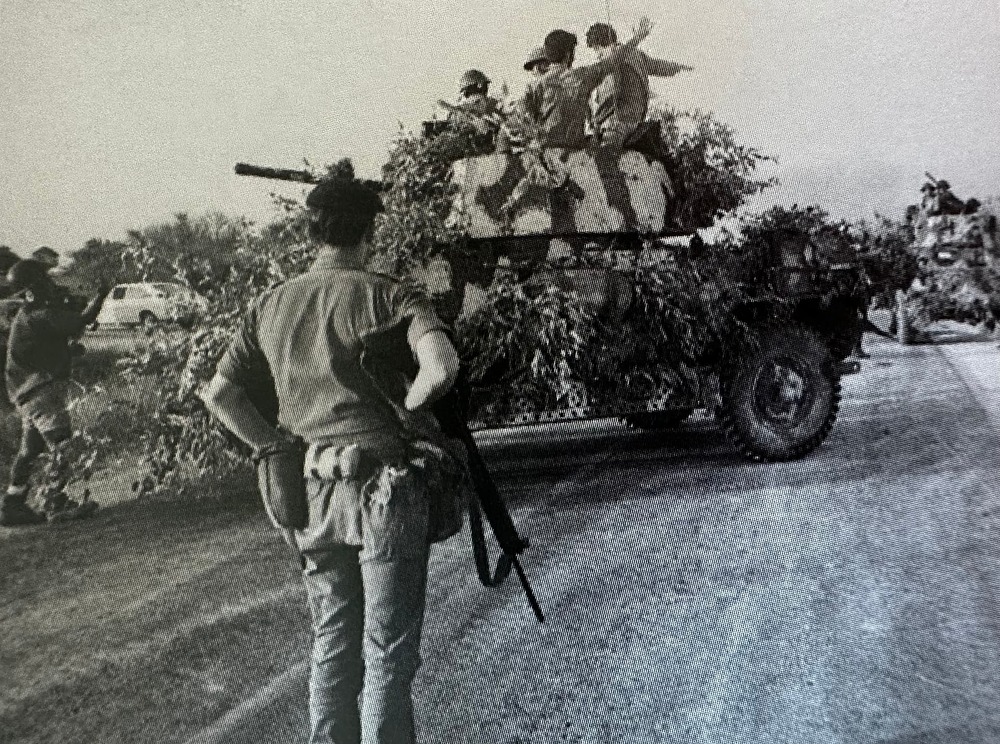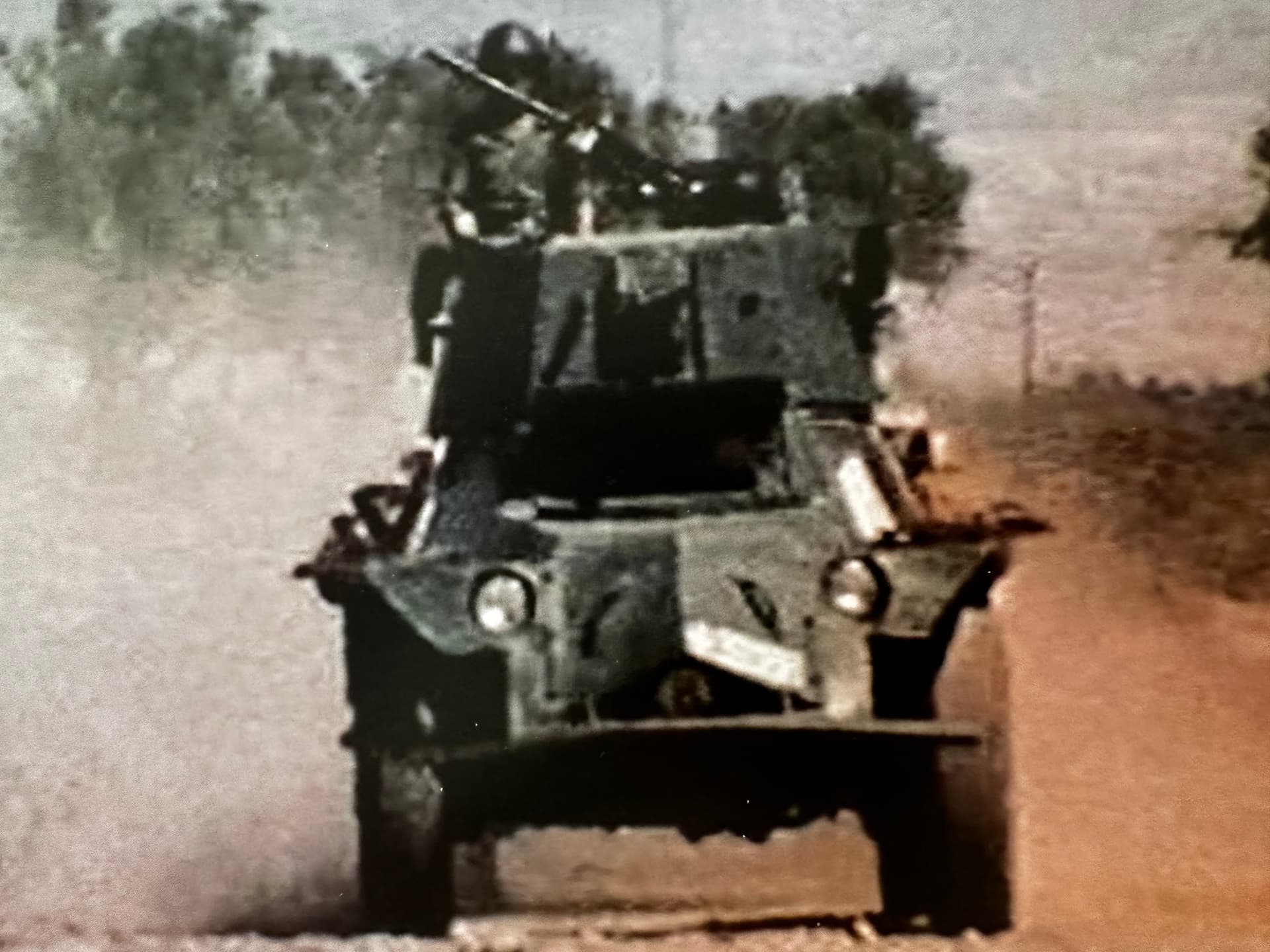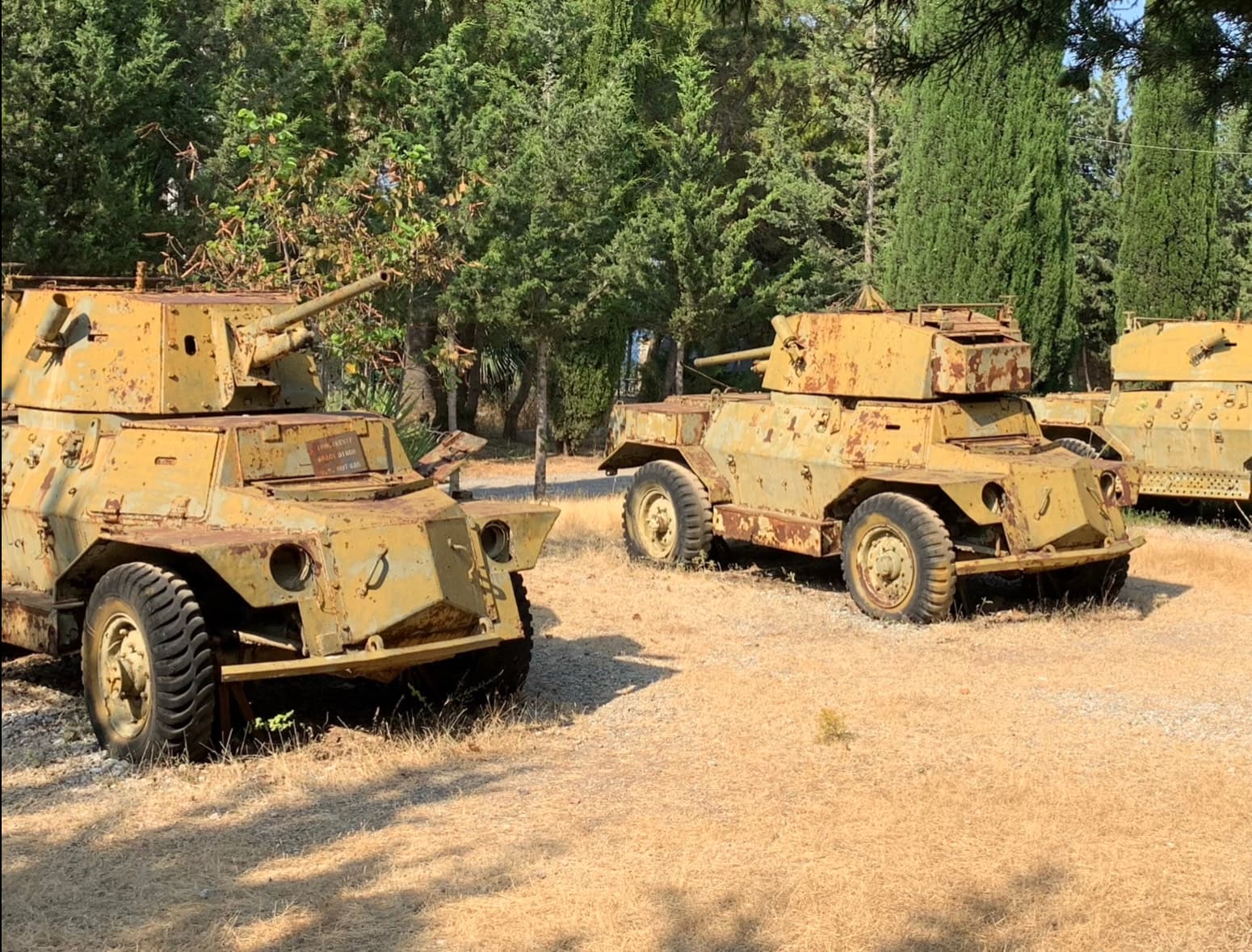[Would you like to see the Cypriot Mk IVF in-game?]
- Yes
- No
0
voters
Marmon-Herrington Mk IVF
The Marmon-Herrington Mk IVF was a South African-produced armored car developed during World War II, built on a Canadian Ford truck chassis and equipped with a 2-pounder anti-tank gun. Rugged, simple, and reliable, the Mk IVF served across multiple theaters, especially in Commonwealth forces. After the war, many surplus vehicles were exported, including to Cyprus, where the Cypriot National Guard operated them during the tense and turbulent years of the 1960s and 1970s, alongside their Soviet T-34-85s.
Historical Background:
Spoiler
The Marmon-Herrington armored cars were a series of 4x4 reconnaissance vehicles designed and produced in South Africa during the early years of World War II. Originally intended to fulfill the British Army’s need for mobile, lightweight armored vehicles, the design was particularly suited for desert operations thanks to its good off-road mobility and relative simplicity.
During World War II, the Mk II and III served with distinction in the North African Campaign, used by South African and other Commonwealth units for reconnaissance, flanking, screening, and support roles. Later in the war, the vehicles also saw use in Italy, Greece, and Syria, where they continued to serve in secondary or policing roles. However, the Mk IV variants never saw service during World War II. The fighting had finished before the vehicles could be deployed.
The Mk IVF was the final and most advanced wartime variant of the series. It was equipped with a QF 2-pounder (40 mm) cannon mounted in a fully enclosed turret, giving it firepower comparable to early British light and cruiser tanks. This made the Mk IVF more than capable of dealing with light vehicles and early-war threats, though it remained lightly armored, leaving it vulnerable to heavier weapons.
Differences between the Mk IV and Mk IVF:
Spoiler
The Marmon-Herrington Mk IV and Mk IVF armored cars were outwardly similar vehicles, but they featured key differences in construction and sourcing. The Mk IV was built using a combination of Marmon-Herrington and Canadian Ford components, while the Mk IVF, developed in response to component shortages, was constructed on the Canadian Ford F60L 3-ton 4x4 truck chassis, allowing production to continue despite supply issues.
Both variants were powered by a Ford V8 petrol engine producing around 95 horsepower, giving them a top speed of approximately 50 mph (80 km/h) and an operational range of 320 km. One source suggests that the Marmon-Herringtons were sold to Cyprus equipped with 6-cylinder Perkins diesel engines, possibly as part of a postwar refit. However, there is limited corroborating evidence to support this claim, and Mamounidakis’s detailed account of Cypriot armored vehicles does not confirm such an engine modification.
Armament for the Mk IV initially consisted of a QF 2-pounder (40 mm) anti-tank gun mounted in a two-man turret; early versions lacked a coaxial machine gun, but later examples were fitted with a .30 caliber Browning machine gun, with provisions for a .30 caliber anti-aircraft Browning on the turret roof. The Mk IVF carried over the same main gun and included the coaxial .30 caliber Browning, alongside the anti-aircraft .30 caliber Browning, reflecting the standardization seen in the later Mk IVs.
In terms of protection and dimensions, both vehicles were lightly armored with up to 12 mm of frontal armor, and they shared similar size profiles: approximately 5.44 meters in length, 2.1 meters wide, and 2.25 meters high, with a combat weight around 6,280 kg. Despite their light armor, these armored cars remained reliable and mobile platforms for reconnaissance duties across several theaters, including post-war conflicts.
History with Cyprus:
Spoiler
Initially acquired by the Cypriot National Guard in 1964, these vehicles were sourced from Greek stocks. Despite their age, they were integrated into the Cypriot forces, notably forming part of the 21st Armored Reconnaissance Battalion (21 EAN).
The period leading up to 1974 was marked by intercommunal strife between Greek and Turkish Cypriots, escalating tensions on the island. This unrest set the stage for the events of July 1974, when Turkey launched an invasion of Cyprus, citing the need to protect the Turkish Cypriot minority following a Greek-led coup.
During the invasion, the Marmon-Herringtons Mk IVF were deployed alongside a limited number of T-34/85 tanks and BTR-152 armored personnel carriers, forming the backbone of the Cypriot armored response. The Marmon-Herrington despite their age, were light, fast and adequately armed, making them ideal for facing light infantry forces. They also faced limited mechanical problems due to the simplicity of their construction. However, these aging vehicles were tasked with confronting the modern Turkish forces equipped with M47/48 Patton tanks and M113 armored personnel carriers. Nonetheless, the crews of these vehicles demonstrated resilience and adaptability, employing guerrilla tactics and leveraging their knowledge of the local terrain to mount effective, albeit limited, resistance.
Throughout the conflict, the Marmon-Herringtons were utilized for various roles, including urban combat, mobile outposts, reconnaissance patrols, and fire support missions. For example, on 20 - 22 July 1974, Greek Cypriot 1 ATD in Famagusta move to clear the Turkish neighborhoods and especially the area around Turkish lyceum that was heavily fortified and in direct contact with the Greek Cypriot area. The four Marmon-Herringtons, stationed in the city, supported the offensive bounding overwatch along with the infantry, silencing machine gun nests with their fire. By nightfall the lyceum and other areas were completely cleared and hostilities ceased in Famagusta.
However, later on in the conflict the main Turkish forces reached Famagusta, they were supported by heavy armor and airpower. Armed with 3 T-34-85s, 4 Marmon-Herringtons and a few field guns the Greeks put up some resistance on the northern outskirt. Despite their efforts, the Cypriot forces were eventually compelled to withdraw, leaving behind destroyed/abandoned T-34s, Marmon-Herringtons and artillery pieces. The very same 1 ATD withdrew from the city in panic. Notably, some Greek Marmon-Herringtons managed to reach Dhekelia where the British blocked them from retreating further to Larnaka. (Pictured below)
The 1974 conflict underscored the challenges faced by the Cypriot National Guard in relying on antiquated equipment against a better-equipped adversary. The Marmon-Herringtons, despite their obsolescence, became emblematic of the Cypriot struggle during this tumultuous period, reflecting both the resourcefulness and the constraints of the island’s defense forces. After the conflict, the Cypriot National Guard retained a number of Marmon-Herringtons until they were finally withdrawn from service in 1984.
Even more remarkably, some units remained in Greek service in the Aegean islands well into the 1990s, primarily in static defense or training roles. This makes the Marmon-Herrington one of the longest-serving armored vehicles of the 20th century, a true survivor of multiple eras of warfare.
Implementation:
Spoiler

This photograph shows a surviving Mk IVF on Cyprus, originally intended for display at a planned, but ultimately never completed, military museum. The vehicle remains as a tangible remnant of the island’s armored history.
The Cypriot Marmon-Herrington Mk IVF could be a great candidate for introduction as a premium, event, or squadron vehicle within the British tech tree, as Cyprus was a former British Colony. It could feature its distinctive Cypriot National Guard camouflage and configuration, it would serve as a fitting complement to the existing Marmon-Herrington already present in the regular tech tree. This variant would offer an additional turret-mounted M1919 anti-aircraft machine gun and forward-facing smoke dischargers, providing both functional and visual variety.
Marmon-Herrington Mk IVF – Specifications:
Spoiler
Origin:
- Union of South Africa
Role:
- Armored Reconnaissance Car / Scout Vehicle
General Characteristics:
- Crew: 4 (Commander, Gunner, Driver, Radio Operator)
- Weight: 6,280 kg (13,847 lbs)
- Length: 5.44 meters
- Width: 2.10 meters
- Height: 2.25 meters
- Chassis: Canadian Ford F60L 3-ton 4x4
Mobility:
- Engine: Ford V8 gasoline (Sources claims: 6 Cylinder Perkins diesel)
- Horsepower: 95 hp
- Top Speed: 80 km/h (on road)
- Operational Range: 320 km
- Drive Configuration: 4x4
- Maximum Climb Gradient: 26°
- Suspension: Leaf spring
Armament:
- Main Gun: QF 2-pounder (40 mm)
- Ammunition: 52 rounds (mix of AP and HE)
- Secondary Armamament: 2x .30 inch M1919 Browning
- Ammunition: 2,500 rounds
- Smoke Grenades: 2x forward facing smoke dischargers (turret-mounted)
Armor Protection:
- Maximum Armor Thickness: 20 mm (frontal)
- Side and Rear Armor: Ranging down to 6–12 mm
- Armor Type: Welded steel, angled surfaces for deflection
Communications:
- Radio Equipment: No. 19 Wireless Set or equivalent
Sources:
Spoiler
Mamounidakis, I. (2008). Armor on Cyprus: Evolution and Operations. Trojan Horse .
Marmon-Herrington Mk. IV (1943)
Marmon-Herrington MK IV Armoured Car - Militarytrader
https://www.perkins.com/en_GB/products/product-range/1100-series/1106.html












